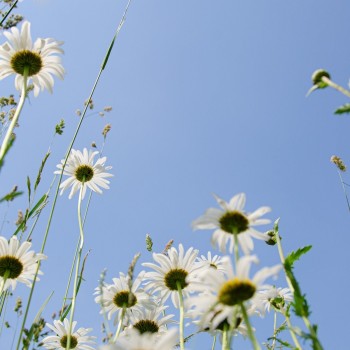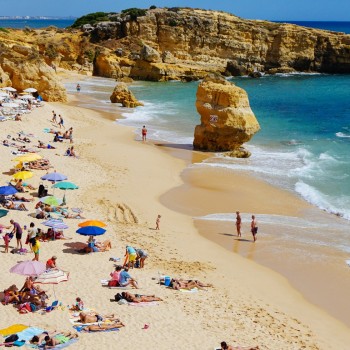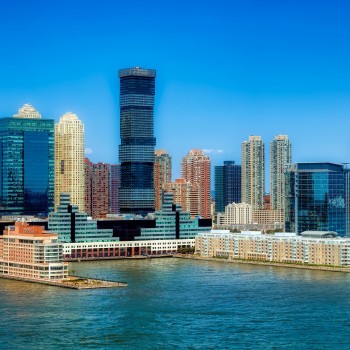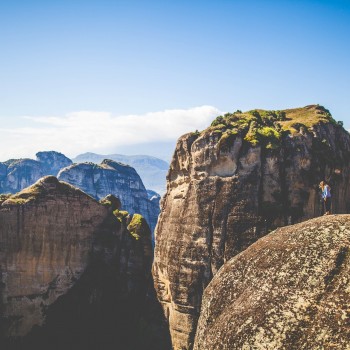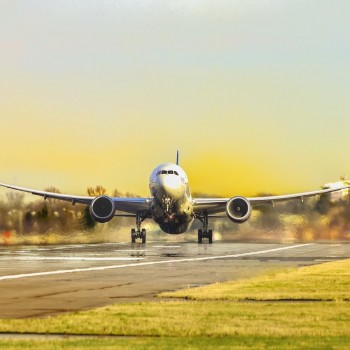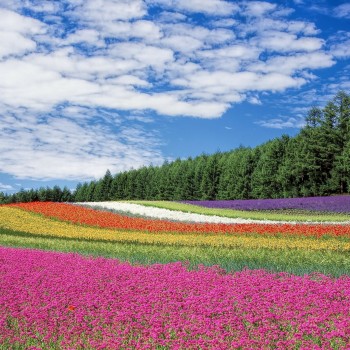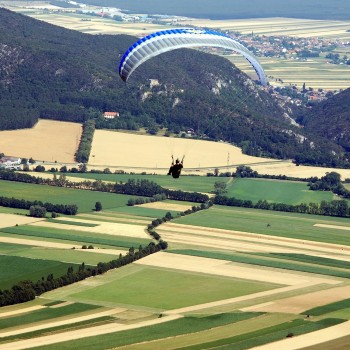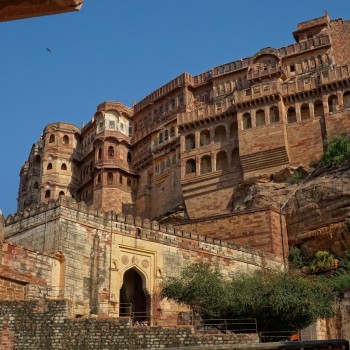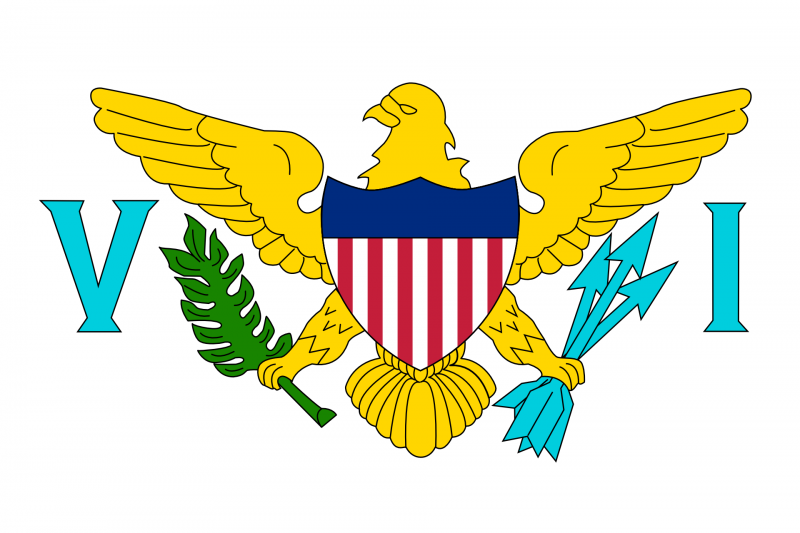United States Virgin Islands
United States Virgin Islands
Capital city description
Charlotte Amalie beckons you to stroll along her cobblestone alleyways, climb her streets of steps, admire antique West Indian furnishings in historic homes, and explore 17th-century Danish fortifications. Often referred to as Downtown or just Town, Charlotte Amalie today is a bustling center for government, schools, offices, shopping, and residences! Founded in 1681 by Danish settlers, it contains a wealth of buildings that provide a glimpse into colonial life. It is listed in the National Registry of Historic Places as an area of particular interest. Visit old and new Charlotte Amalie; see the evolution from a colonial trading post to one of the busiest duty-free ports in the Caribbean! Here is a selection of sites you might visit. Charlotte Amalie is divided into three quarters: Kongens (King’s) Quarter, Dronningens (Queen’s) Quarter, and Kronprindsens (Crown Prince’s) Quarter. They share similarities like the use of step streets, but each has a unique character. All three quarters contain historically significant buildings. Some of the best preserved and most accessible are located in a small area of Kongens Quarter and the commercial area along Main Street in Dronningens Quarter.
Climate
The US Virgin Islands have a tropical climate. Temperatures throughout the year are between 25 and 30 degrees Celsius (77-86° Fahrenheit). In August and September, hurricanes may occur.
Languages spoken
The official language in the Virgin Islands is English.
Fun/Fascinating Facts
- The US Virgin Islands are the only place in the US where you drive on the left side of the road. Even though the islands are part of the US, driving laws date back to when they were under European rule.
- St. Croix, St. John, and St. Thomas each have a nickname. St. Croix has the nickname Twin City, Love City was given to St. John, and St. Thomas is known as Rock City. The three of these islands combined are about two times the size of Washington, D.C.
- St. Croix is home to the oldest Baobab tree in the Caribbean. While the tree is native to South Africa, it was brought to the US Virgin Islands and planted during the 18th century. Baobab trees can grow up to 25 meters high and live for thousands of years, so it’s expected to be on the island for a very long time.
- The US Virgin Islands is the only territory in the US to have coasts on both the Caribbean Sea and the Atlantic Ocean. When you travel to the islands, make sure to swim in both of these oceans.
- St. John is home to an underwater National Park that lives In Trunk Bay. Visitors will find an Underwater Trail, which happens to be one of the best places to snorkel in the Caribbean. There are many signs below the water that provide information about the marine life you see as you enjoy the trail.
Unique Customs/Traditions
- People of the Virgin Islands are serious about having fun. Initially celebrated in 1912, Carnival has been held annually since 1952. Fusing African traditions with European customs, Carnival is a three- to four-week celebration in April on St. Thomas, June to July on St. John, and December to January on St. Croix.
- Some people of the Virgin Islands tell tales that pay homage to the superstitions and beliefs of their ancestors, folding in magical elements like evil spirits. Traditional stories often involve “jumbies,” the hearts of deceased people, and cautionary tales for overly-curious kids or explainers for unfortunate events. (During Carnival, Mocko Jumbies—people on stilts dressed as jumbies—walk in parades and wear colorful costumes.) To inject the spirit of the U.S. Virgin Islands into your life, consider hosting your storytelling get-together.
- One of the best ways to get to know a culture: is by learning to appreciate its food. Try cooking up a pot of kallaloo, a gumbo-like dish from the islands that purportedly offers those who eat it good luck in love in the new year. Recipes for kallaloo (also spelled callaloo) vary, but the basic dish is a soupy stew made with salted meat, fish, okra, and spinach. And for dessert, try your hand at red grout (also called rodgrod), Danish tapioca made with guava, sugar, and spices.
- Three Kings’ Day (also called Epiphany) happens to be a public holiday, and on January 6, Christian Virgin Islanders commemorate the Biblical three wise men’s visit to an infant Jesus Christ. Even if you choose not to attend church, have a feast with your family, and encourage your kids to leave grass in a shoebox beneath their beds. According to legend, the wise men will swap the grass for presents during the night.
- Music and dance are an essential part of Virgin Islands culture. Besides listening to calypso, reggae, and steel pan bands, learn about Quelbe, a traditional music and dance style popular on the islands. Also called Fungi music, Quelbe blends African slave beats with Caribbean folk melodies.
Popular universities
| Name | Description | |
|---|---|---|
| University of the Virgin Islands, Charlotte Amalie | UVI was founded as the College of the Virgin Islands on March 16, 1962. In 1986, it officially became one of the historically black colleges and universities. The institution also changed its name in 1986 to the University of the Virgin Islands to reflect the growth and diversification of its academic curriculum, research programs, and regional community services. The university has two campuses and two extension facilities. The 388 acres (1.57 km2) campus opened in 1963 on St. Thomas, named College of the Virgin Islands. The Albert A. Sheen campus is on St. Croix. The extensions include an academic center and an environmental research facility, both on St. John. The St. Croix campus location in Estate Golden Grove in mid-island. The latter campus is three miles (5 km) from Charlotte Amalie, the territory's capital. St. Thomas campus situates on two hills, and it has its beach (John Brewer's Bay beach), which can be directly accessed off the main road, which cuts through the campus. The majority of the buildings on the St. Thomas campus are made of volcanic rock and cement. The university has five academic divisions: Business, Education, Humanities and Social Sciences, Nursing, and Science and Mathematics. UVI offers various graduate degree and undergraduate degree programs. The graduate programs consist of a Specialist Degree in Education Specialist in School Psychology and the following Master's degrees: Master of Arts in Education, Master of Arts in Mathematics for Secondary Teachers, Master of Business Administration, Master of Marine and Environmental Science, Master of Psychology and Master of Public Administration. The Undergraduate Degree Programs divides into several categories: Bachelor of Arts, Bachelor of Science, Associate of Arts, Associate of Science, and Associate of Applied Science. | |
| University of the Virgin Islands-Kingshill, | The 130-acre Albert A. Sheen Campus of the University of the Virgin Islands is located at Golden Grove, midway between the towns of Christiansted and Frederiksted, on the island of St. Croix in the United States Virgin Islands. The entrance to the campus, from Queen Mary Highway, is lined by royal palm trees leading to the Melvin H. Evans Center for Learning, the residence halls, and the Student Center. The main buildings include the Great House, which housed classrooms and administrative offices before 1975; the Melvin H. Evans Center for Learning (the main academic building). The Northwest Wing, erected in 1989 and now houses the computer laboratories; the Research and Extension Center, which opened its doors in 1992 and housed the land-grant programs; and the Nursing complex, which has been home to the School of Nursing since 1996. The campus was named for a prominent lawyer, legislator, and champion of education, Albert A. Sheen Jr., on March 24, 2011. The Student Center houses a combination auditorium/cafeteria, a snack bar, the Office of Student Activities, the Student Activities Lounge, the Bucs Fitness Center, a student mail room, and the Campus Bookstore. Behind the Student Center are outdoor basketball, volleyball, tennis courts, and soccer fields used for physical education classes, intramural athletics, and recreation. The soccer fields were established in May 2012. The Delta M. Jackson Dorsch Complex opened for student occupancy in January 1999. The residence hall complex comprises 17 three-bedroom suites, the Office of Student Housing & Residence Life, a reception area, lounge, two study/seminar rooms, laundry facilities, and on-campus living quarters for the Student Housing Supervisor. | |
Festivals & Events
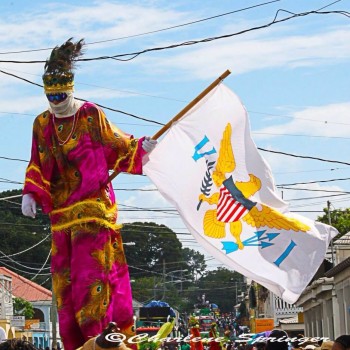
Valentine’s Day Jump Up
Date: February
Although Christiansted hosts four lively Jump Up celebrations per year, none are more famous than the St Croix community’s annual Valentine’s Day extravaganza of arts, crafts, food, and mythical mocko jumbies dressed in colorful silks and stilts. The calls of outdoor vendors and the sounds of local musicians fill the air during this upbeat Valentine’s Day celebration.

St. Thomas International Rolex Regatta
Date: March
The "Crown Jewel of the Caribbean," as this prestigious race, takes place at the St. Thomas Yacht Club each March. This yacht race, considered among the most competitive globally, attracts sailors from the Caribbean, Europe, and North America. Although the main racecourse is situated near Christmas Cove, there are also several side races. The Pillsbury Sound Race takes yachters around St John's and St Thomas's countless coves, while a challenging distance race occurs between Charlotte Amalie's harbor and St Thomas' East End.

Transfer Day
Date: March 31st
The US Virgin Islands may have been United States territories for nearly a century, but every March 31, the islands celebrate their Danish past during Transfer Day. Danish products were sold from shops and vendors when the islands were transferred from Danish to American territories. Special excursions to former Danish forts and buildings and organized the ruins.
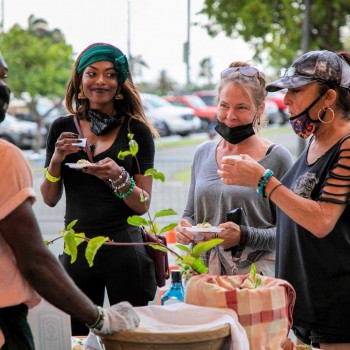
A Taste of St Croix
Date: April
Epicure will undoubtedly enjoy this annual one-day April festival at St Croix’s only all-inclusive resort, the Divi Carina Bay All Inclusive Beach Resort and Casino. No fewer than 50 of the region’s most renowned restaurants serve their most delicate dishes during this celebration of St Croix’s finest culinary talent. French and Italian food is served alongside traditional Cajun, Creole, and Caribbean meals. All festival proceeds go towards the St Croix Foundation.
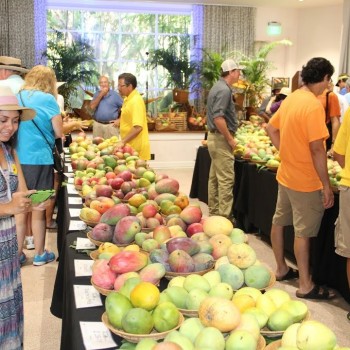
Mango Melee and Tropical Fruit Festival
Date: June
St Croix continues its reputation as the unofficial culinary capital of the US Virgin Islands with this annual late June tribute to the island’s most famous tropical fruit at the St George Village Botanical Garden. Although the festival grew to include other fruits after Hurricane Lenny destroyed the 1999 mango crop, mangoes continue to be this festival’s primary focus. Visitors can sample several of the more than 80 different mango varieties grown throughout St Croix in the forms of mango butter, beer, wine, and even sushi. The festival also features mango cooking and eating contests.

St John Festival and Independence Day
Date: July
Calypso musicians, colorful mocko jumbies, and a lively parade are the main ways St John celebrates the United States Independence Day and the last day of its month-long Carnival celebrations on the Fourth of July. This day also features the crowning of Ms. St John and the carnival king and a fireworks display rivaling many in mainland United States cities.
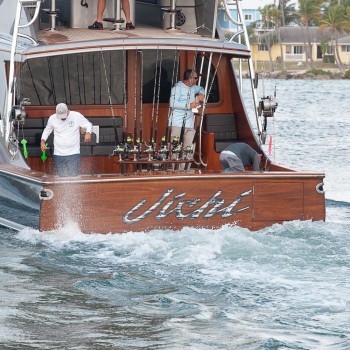
U.S. Virgin Islands Open/Atlantic Blue Marlin Tournament
Date: August
Its eco-friendly fishing festival awards trophies to the anglers who catch the bluest marlin and those who tag. And release the most significant number of fish. All proceeds from this prestigious event, held in St Thomas during the August weekend near the full moon, go towards the Boy Scouts. Anglers from across the globe are invited to participate alongside some of the world’s greatest anglers.
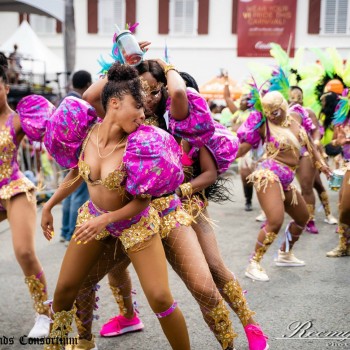
St Croix Blue Bay Jazz Festival
Date: July
Fort Frederik Beach and the Caribbean Museum Center for the Arts are the main venues of this November jazz festival held in Frederiksted each November. Some of St Croix’s finest jazz musicians perform alongside musical legends such as Tito Puente, Jr, and Pete Escovedo. Mocko jumbies, food vendors, and arts. And crafts accompany these free musical performances.
Attractions / Top Sights

Virgin Islands National Park, St. John
When to visit: https://www.planetware.com/tourist-attractions/united-states-virgin-islands-uvi.htm
Virgin Islands National Park is a conservation area covering some three-fifths of the island of St. John in the United States Virgin Islands, West Indies. The park was established in 1956 and now also includes waters surrounding St. John (added in 1962) and most of Hassel Island (1978) in the harbor of Charlotte Amalie (on the island of St. Thomas). It covers a total area of 23 square miles (60 square km) of land and water. The park was designated a UNESCO World Network Biosphere Reserve in 1983, and The landscape consists of steep mountains, deep valleys, white-sand beaches, and coral reefs. Because of sugarcane cultivation, removed Most of the tree cover for sugarcane cultivation, but the land reverted to the forest when the plantations were abandoned. The park is home to some 800 species of plants introduced in various habitats, from moist subtropical highlands to semiarid scrubland. Cactus and agave grow in the driest areas. Mangrove swamps along the shore and seagrass beds in shallow water provide food and protection for marine life and Orchids, hibiscuses, frangipani, bougainvilleas, palms, and kapok trees, mangoes, and bay rum are common. Sea grapes and manchineel (Hippomane Mancinelli) grow on the beaches. The park’s coral reefs support a wide variety of colorful fish and other marine life. More than 20 species of tropical birds, such as the ani and the bananaquit, nest on the island, and dozens of migrating species visit. Pelicans, frigate birds, and various shorebirds are commonly seen along the beach, and endangered green and hawksbill sea turtles nest there. Lizards such as geckos, anoles, and iguanas are abundant. The only native land mammal is the bat.

Trunk Bay Beach & Underwater Snorkel Trail, St. John
St John Island’s most famous beach is also one of the most photographed beaches in the United States Virgin Islands. Over a quarter mile of beautiful white sand makes this the showpiece beach of the National Park Service. Enjoy the self-guided Underwater Snorkeling Trail; with underwater information about coral formations and sea life. Facilities include a snack bar/grill, snorkel gear rentals, beach chair rentals, showers, restrooms, public telephones, and lifeguards. Please note: Trunk Bay is the only St John beach that charges an entrance fee. Because of its popularity, Trunk gets a fair number of visitors. The numbers, not surprisingly, often correspond to the number of cruise ships at port in Charlotte Amalie on St Thomas. Check the cruise ship schedule. While the beach can get crowded nearest the beach entrances and closest to the snorkeling trail – fewer people venture down the coast to the west ( left as you face the ocean). If you’re looking for a bit more space, make the walk. You’ll also find a little beach at the far end. It doesn’t get as much sun, but it’s about as private as you get on Trunk ; ) Snorkeling the 650′ Underwater Snorkeling Trail is great for first-timers, kids, and older adults. Although this site sees a lot of visitors, it’s still one of the best snorkeling spots on St John to see colorful fish and corals – in less than 20′ of water. Keep an eye out for clusters of indigo-blue tunicates. They are a rare treat – and seem to thrive in this location! The best snorkeling at Trunk Bay is around the small cay that lies just 30 yards off the beach. The western side ( left as you face the water) enjoys more protection from waves and is home to more corals and fish than the eastern side. Visitors will be treated to various fish and corals in the patch reef that encircles the cay. Most are easily seen from the surface – since the water is never more than 8′ to 16′ deep. For more experienced snorkelers – diving down, you’ll be able to see smaller marine life and corals. Keep an eye out for Arrow Crabs, Juvenile Spotted Drum, and Blue Bell Tunicate corals.

Buck Island Reef National Monument, St. Croix
Buck Island is a small uninhabited island located 1 ½ mile north of the island of St. Croix. While there are numerous islands of similar size and appearance in the Lesser Antilles, a group of islands in the Caribbean Sea, Buck Island has a distinctive feature: a magnificent elkhorn coral barrier reef. The unique quality of this bank-barrier reef and its lagoon are noted throughout the Caribbean and have long been recognized. The Government of the Virgin Islands took control of Buck Island in 1936 and established the island and its coral reefs as a protected territorial park in 1948. Efforts have been made to re-establish native flora and fauna, including rare plants and animals native to St. Croix. The island’s coral sand beaches and tropical dry forests, along with the shoreline, host year-round sea turtle nesting. For more than 30 years, Buck Island’s Sea Turtle Research Program has studied endangered hawksbill and leatherback turtles and threatened green and loggerhead turtles that nest and forage within the monument. Suppose you prefer to snorkel or SCUBA dive through one of the Caribbean’s finest intact coral reefs, hike the trail over the island to the observation platform for a view of the reef and the Virgin Islands to the north, or lounge and sunbathe on the coral sand beaches and relax in turquoise of tropical waters. In that case, Buck Island Reef National Monument will not disappoint.
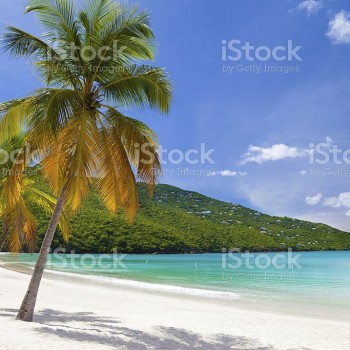
Magens Bay, St. Thomas
Magens Bay is St. Thomas' most famous beach. The beautiful one-mile stretch is a public park and was donated to the people of the Virgin Islands by Arthur Fairchild. It is 1 of 2 beaches on St. Thomas has an entry fee; funds are used to maintain the facilities and the beach. The water is usually very calm with no waves or current, great for floating along and swimming. The bay deepens gradually from shore, making it perfect for small children. Snorkeling is possible along the rocky coast, but Magens Bay is not known for good snorkeling. A water sports booth rents paddle boats, kayaks, and sunfish. Beach chairs, floats, and snorkel sets are available at the concession. Also at the benefit is a bar and restaurant that serves burgers, pizzas, and other snacks, a gift shop, and a hair braiding stand. The beach is a popular stop on island tour itineraries and can get crowded on days when several cruise ships are in port. Most beachgoers pick a spot close to the restaurant area, so typically, you will find fewer people if you walk down the shore away from the concession. On weekday afternoons, you will find residents relaxing after work and getting some exercise. It is common to see moms pushing strollers while power walking, men and women jogging, kids riding bikes, and people swimming laps between 5 and 6 pm. The beach is a favorite destination for residents, and parties ranging from small picnics to loud gatherings are familiar. Lifeguards are on duty every day.

Cruz Bay, St. John
Cruz Bay is the main town on Saint John in the U.S. Virgin Islands. The harbor for this town is filled with sailboats from around the world. The small town square is the center of commerce, with many small bars, restaurants, and shops. A car rental, supermarket, and Mongoose Junction are within walking distance, and a collection of upscale shops for clothing, jewelry, etc. You can buy fresh bread at the bakery there. Nestled in the hills around the bay are hotels and apartments. You can catch a taxi at the town square to take you to the various places of interest for a nominal fee or sit at an outdoor table sipping rum drinks with little parasols.
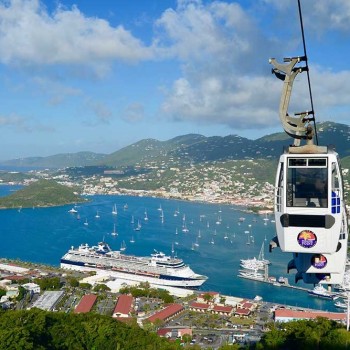
Charlotte Amalie, St. Thomas
Charlotte Amalie, the capital of the United States Virgin Islands and the largest city in the archipelago, is located on the island of Saint Thomas. Once famous as a deep-water harbor that was a haven for pirates, it is now the most popular cruise port in the Caribbean. Charlotte Amalie is a colorful and historic town— its pastel houses and brightly painted historic buildings, and holiday homes are set against the background of vibrant hills. One of the city’s assets is its rich, diverse culture. Explore the hundred or so islets and cays comprising the Virgin Islands. There are many ways to enjoy the water in Charlotte Amalie, from scuba and snorkeling to fishing and sailing. In Charlotte Amalie, the cuisine is as diverse as the people. You can enjoy fresh seafood, Creole and Danish dishes, sushi, and a rainbow of fruits and vegetables in the local restaurants. If you’re interested in great happy hour deals, try the Greenhouse Restaurant, Bar, and Nightclub. Or kick back at Shipwreck Tavern for sports broadcasts, music, and pool.

Coral World Ocean Park, St. Thomas
Coral World Ocean Park showcases the creatures of the Caribbean Sea and beyond. Swim with sea lions, touch turtles, and examine coral reefs from the underwater observatory tower. Enter this complex of pools and aquariums and learn about the exotic sea creatures that inhabit the waters around St. Thomas. Many of the animals here have been rescued from around the coastline of the Virgin Islands, while others have come from as far away as South America. Head for the turtle pool to watch sizeable green sea turtles gliding through the water. Learn about their habitat and behavior from knowledgeable staff or sign up for a turtle encounter to get up-close with these astonishing animals. Walk to the shallow stingray pool. Try to spot their eyes or tail poking out from the sandy floor. During feeding times, visitors can enjoy the unusual sensation of having food sucked from the palm of their hands by a ray. Among the most popular outdoor tanks is the shark pool. Observe the sharks as they splash their tales in the shimmering water. Venture to the underwater viewing area to admire them from a different perspective.
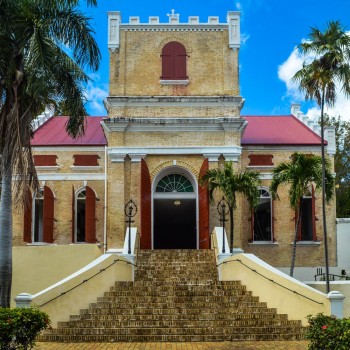
Heritage Trail, St. Croix
St. Croix’s heritage trail traverses the entire island of St. Croix, highlighting particular sites, historical buildings, churches, flora and fauna, and more. If you are interested in island history, culture, and nature, then pick up a Heritage Trail map and explore. The trail is one of 50 Millennium Legacy Trails recognized by the White House Millennium Council. It points out more than 200 sites of interest. The St. Croix Landmarks Society provides the map.

